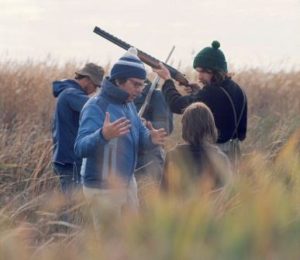
The SA Film Corporation’s first director said that the organisation had been given “an impossible task” – now Flinders screen studies academic Associate Professor Mike Walsh is going to describe how it was done.
As part of the SAFC’s 40th anniversary, Associate Professor Walsh has been commissioned to write a history of the organisation and its activities.
Associate Professor Walsh said that the commission and the exhibition of production photographs currently showing in the Flinders University City Gallery were evidence that the Corporation was keen to make the most of its archival resources.
“I think they’re aware that they have a history to be proud of, and also, that because of the turnover of staff over time, they are at risk of losing their corporate memory,” Associate Professor Walsh said.
“When Gil Brealey used the phrase ‘impossible task’, by that I think he meant that the Film Corporation was meant both to attract a film industry to South Australia and to develop a local talent,” he said.
“And given that South Australia has six per cent of the population and is isolated from the film industry’s centres of power on the eastern seaboard, it was always going to be a difficult thing to do.
“It’s hard for Australian films to survive; it’s even harder for South Australian films.
“Nonetheless, in its first few years, the Corporation staged an unprecedented run of successful feature films. Sunday Too Far Away, Picnic at Hanging Rock and Storm Boy come right at the start of the Australian feature film renaissance and are vitally important films.”
The production-plus-investment role, unique to SA, also brought its share of failures, and in 1994 the Corporation’s act was changed, converting its role into investment-only.
Using two main strategies – offering financial incentives to producers to shoot their films in SA and running programs to develop locally made film – the SAFC has again been chalking up successes.
“It has an important been part of the careers of directors like Rolf de Heer, Scott Hicks, Mario Andreacchio and Craig Lahiff,” Associate Professor Walsh said.
As other states have tried to attract Hollywood productions, Associate Professor Walsh said, for the past decade the SAFC has styled itself as the home of the independent film-maker.
“Film-making here is going to be lean, to be low-budget, but it is precisely these sorts of films that have been critically successful in recent years, such as last year’s Snowtown.”
One aspect of SAFC history Associate Professor Walsh finds particularly enjoyable is Flinders University’s long and close involvement.
In 1973 Scott Hicks had the “temerity” to ask the newly formed SAFC to fund completion of his student film; retiring director Gil Brealey came to Flinders to lecture in 1976 before going on found Tasmania’s film corporation.
Many staff of the SAFC and several of South Australia’s film directors, past and present, are also Flinders graduates, Associate Professor Walsh said.
“I’m happy to say it’s been a strong connection that carries through to the present.”

